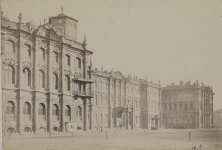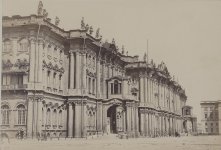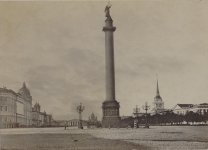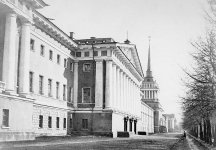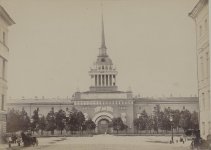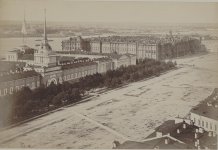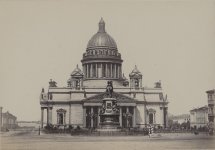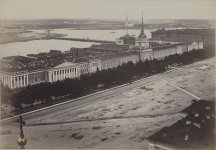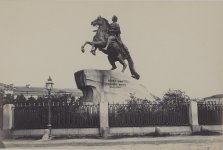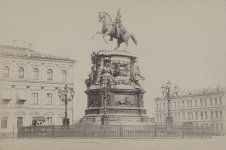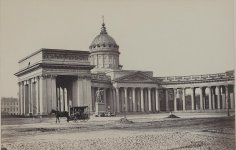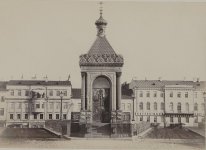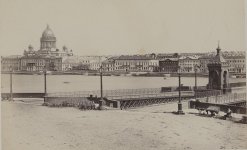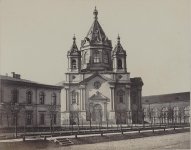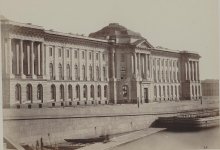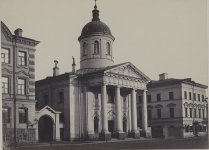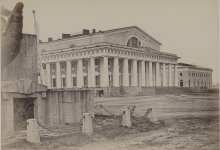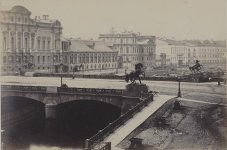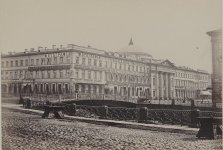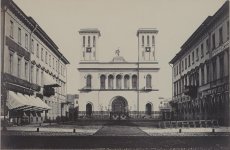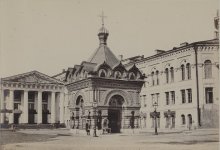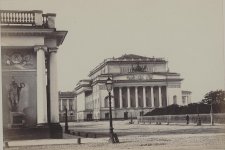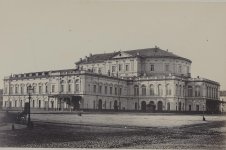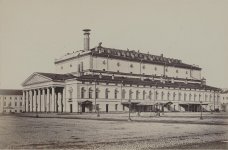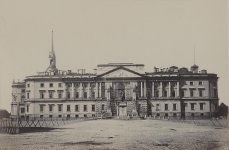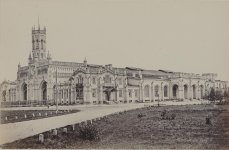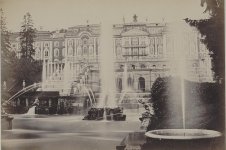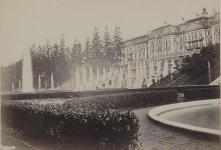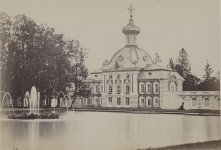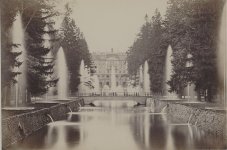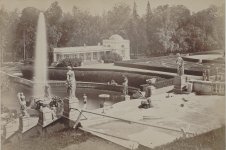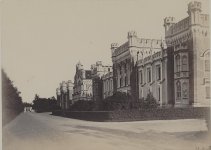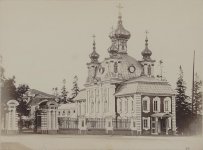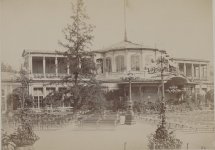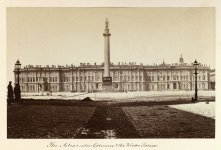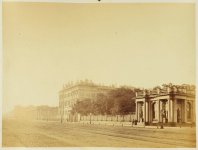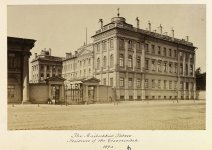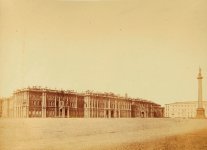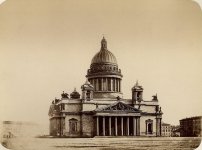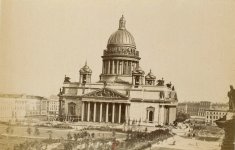I named this article the way I did, because photographs presented below (and alike) could provide a portion of an answer to the following questions.
While one could definitely argue the shutter speed and exposure time, as well as deliberate population removal for the purposes of taking a picture... the photos, I believe, will prove otherwise. A few movable objects are displayed correctly, therefore exposure is not an issue. And considering emptying out railway stations, key administrative buildings, and religion related structures sounds like too much of a wishful thinking. Explaining all the below images with early morning ours also sounds highly questionable. Shadows dismiss white night possibilities.
The population of Saint Petersburg was supposed to be 682,300 in 1870. We see none of it. Streets are clean, vegetation is scarce, no stray animals, no accidental paper on the ground - the city looks dead. A single person here and there represents the absent population.
Note: See this 1861 Panoramic Photograph of the empty streets of Saint Petersburg first.

KD Summary - apart from these photos being staged, I have only two versions of what could be happening "no people" photographs. Neither is bright.
WHY do we NOT REMEMBER this:
- Why our cities are buried in mud
- Why nobody knows about the Grand Tartary
- Why older African maps have no Sahara Desert
- Why the world trees are 200-250 years old on average
- What happened to the structures depicted by Batista Piranesi
- Who built all these buildings all over the World
- Who, how and why annihilated our cities, and towns
- Why North America looked so different on the older maps
- Why we used to have star-shaped city design all over this World
- And many other "why's and who's" we are trying to find answers to...
"Your highness, GRAND MASTER, this city is ready to be re-populated.
We inspected it, and present you with this photographic proof..."
It is not the lack of people which disturbs me the most. It's the absence of life on these 1860s - 1870s photos of the Russian city of Saint Petersburg.We inspected it, and present you with this photographic proof..."
While one could definitely argue the shutter speed and exposure time, as well as deliberate population removal for the purposes of taking a picture... the photos, I believe, will prove otherwise. A few movable objects are displayed correctly, therefore exposure is not an issue. And considering emptying out railway stations, key administrative buildings, and religion related structures sounds like too much of a wishful thinking. Explaining all the below images with early morning ours also sounds highly questionable. Shadows dismiss white night possibilities.
The population of Saint Petersburg was supposed to be 682,300 in 1870. We see none of it. Streets are clean, vegetation is scarce, no stray animals, no accidental paper on the ground - the city looks dead. A single person here and there represents the absent population.
Note: See this 1861 Panoramic Photograph of the empty streets of Saint Petersburg first.
Below you can see a few 1897-1902 photos of the same city of Saint Petersburg.
Contrast is obvious.







Contrast is obvious.
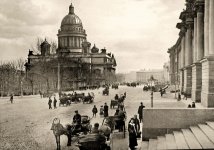
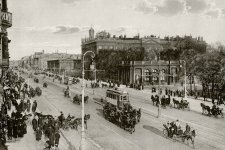
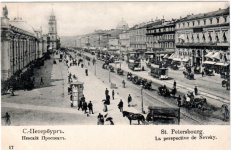
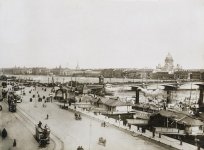
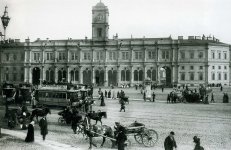
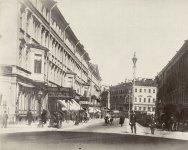
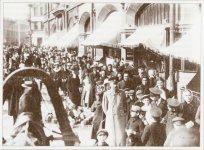
KD Summary - apart from these photos being staged, I have only two versions of what could be happening "no people" photographs. Neither is bright.
- Some catastrophic/epidemic event caused the entire city to die out. The dead were eventually relocated (buried, burnt, etc). The city was cleaned up, and prepared for its new residents
- We are witnessing the after-harvest city being ready for re-population with the new spin of our civilization


